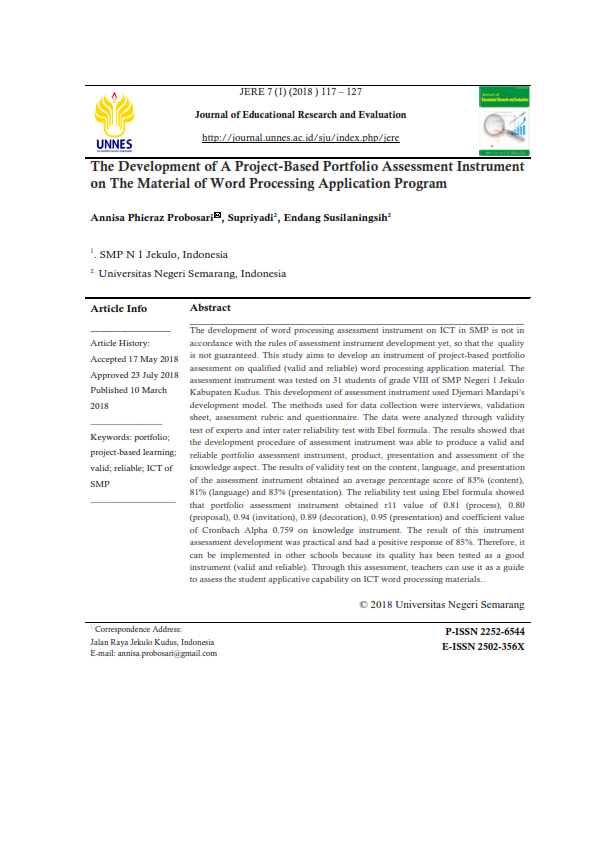The Development of A Project-Based Portfolio Assessment Instrument on The Material of Word Processing Application Program
##plugins.themes.academic_pro.article.main##
Abstract
The development of word processing assessment instrument on ICT in SMP is not in accordance with the rules of assessment instrument development yet, so that the quality is not guaranteed. This study aims to develop an instrument of project-based portfolio assessment on qualified (valid and reliable) word processing application material. The assessment instrument was tested on 31 students of grade VIII of SMP Negeri 1 Jekulo Kabupaten Kudus. This development of assessment instrument used Djemari Mardapi’s development model. The methods used for data collection were interviews, validation sheet, assessment rubric and questionnaire. The data were analyzed through validity test of experts and inter rater reliability test with Ebel formula. The results showed that the development procedure of assessment instrument was able to produce a valid and reliable portfolio assessment instrument, product, presentation and assessment of the knowledge aspect. The results of validity test on the content, language, and presentation of the assessment instrument obtained an average percentage score of 83% (content), 81% (language) and 83% (presentation). The reliability test using Ebel formula showed that portfolio assessment instrument obtained r11 value of 0.81 (process), 0.80 (proposal), 0.94 (invitation), 0.89 (decoration), 0.95 (presentation) and coefficient value of Cronbach Alpha 0.759 on knowledge instrument. The result of this instrument assessment development was practical and had a positive response of 85%. Therefore, it can be implemented in other schools because its quality has been tested as a good instrument (valid and reliable). Through this assessment, teachers can use it as a guide to assess the student applicative capability on ICT word processing materials..
